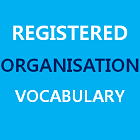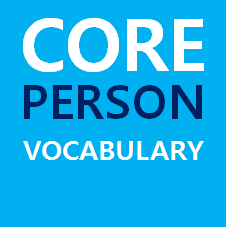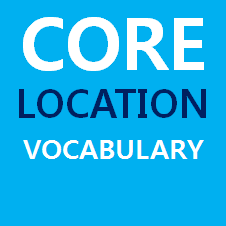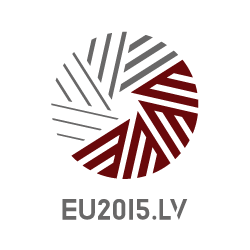SEMIC 2015 - Semantic Interoperability Conference
Where to stay?
The http://www.latvia.travel/en/article/riga website provides with an extended list of practical information regarding Riga, including amongst other Hotels, Restaurants, Events, various services, etc.
Arriving earlier or staying on?
Would you like to stay on and enjoy Riga? Will you arrive earlier and have time for an evening in the city? Find out more about what Riga can offer to you at: http://www.latvia.travel/en/article/riga webpage or download the city guide application. To discover more about Latvia and its wonderful heritage, visit the http://www.visitlatvia.lv/en/webpage.
National Library of Latvia
Mūkusalas iela 3, Riga LV-1423, Latvia
The National Library of Latvia is situated in Zemgales suburb (1423), on 3 Mūkusalas street.
Access
To reach our premises you can take the following Means of Public Transport:
TrolleyBus:
No 27: From Stacijas square, get off at Laikraksts "Diena" stop
Bus:
No 24: From Arēna Riga, get off at the Central Station (Centrālā stacija)
No 10: From Riga Central Market (13 janvāra iela stop), get off at Laikraksts "Diena" stop
The map of the tram routes is available here
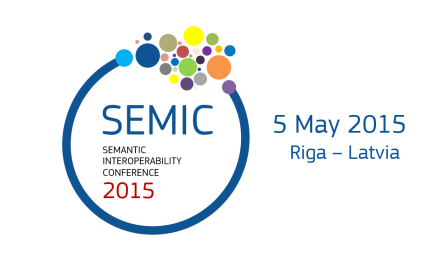
In this fifth edition of the Semantic Interoperability Conference, SEMIC 2015, we had the pleasure of welcoming 152 participants from 28 countries.
Download here the SEMIC 2015 Highlights Report or preview it below.
Bringing Enterprise Information Management and Service Portfolio Management to public administration
On 5 May, the ISA Programme of the European Commission is organising its 5th conference on Semantic Interoperability for e-Government, this year together with the Latvian Presidency, at the National Library of Latvia in Riga. Last year's conference attracted some 200 participants from more than 30 countries.
Emerging trends in public administration, such as "digital by default" and the "once only" principle, require public organisations to rethink the way they manage information, especially in the context of public service delivery. "Digital by default" is the approach of putting the online channel at the forefront of public service delivery. The "once only" principle involves eliminating the unnecessary administrative burden involved when users are required to supply the same information more than once to government.
SEMIC 2015 will explore how Enterprise Information Management and Service Portfolio Management can help public administration improve its modus operandi, reduce costs and improve public services through digital transformation. While these practices are common in the private sector, we observe that adoption in public administrations remains quite low.
Enterprise Information Management introduces principles and practices for managing an organisation’s information in a correlated, contextual and enterprise-wide manner. In this context, certain types of data become very important:
- Master data: data used by various applications and systems across the enterprise. Governments store their master data in what has been called "base registries". Access to base registries should enable public administrations to have access to a single source of "Single Version of Truth".
- Core Vocabularies (aka Core Data Models): the data models used to represent master data.
- Reference Data: highly reusable value lists like codelists and taxonomies.
Service Portfolio Management aligns the delivery of digital services with the business objectives of the organisation. It introduces a service perspective on organizations. Service Portfolio Management involves a mix of activities including service documentation, service governance and supporting IT tools. Instead of creating a flat list of services a "service portfolio" captures relationships, information flows and dependencies forming a complex enterprise service ecosystem. Service Portfolio Management principles and practices can help public administrations to manage efficiently and effectively their digital public services and better understand the underlying information flows.
In this year's conference experts from the private and the public sector will share first-hand experiences, tools and best practices on the above presented topics.
Meet our Keynote Speakers

|
Takashi Wada - Commerce and Information Policy Bureau, Ministry of Economy, Trade and Industry (METI), Japan Mr. Takashi Wada is the Director of Information Technology Project Office, Ministry of Economy, Trade and Industry (METI), GOJ. He serves for e-government policy planning and administration of major e-government projects including open data demonstration projects and the Infrastructure for Multilayer Interoperability (IMI) project among e-government systems and private sector. The Japan's latest IT strategy in 2013 refers to the development of information exchange infrastructure among government organizations where fragmented authorities at central government and 1700+ local municipalities hinder streaming flow of information. The IMI project is directly responding to such policy need. Mr. Wada joined Ministry of International Trade and Industry (currently,METI) in 1993. After undertaking several IT related positions, he was assigned to the current position in 2013. Since then he has been taking leadership in opendata and government interoperability discussions within the government. |
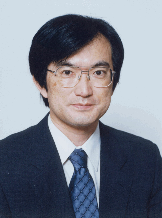
|
Shuichi Tashiro - IPA (Information-technology Promotion Agency), Japan Dr. Shuichi Tashiro is a General Manager of the Open Standards Promotion Center of the Information-technology Promotion Agency (IPA), Japan and driving IMI project to enhance semantic interoperability of eGovernment systems. IMI published their core vocabulary on February 2015 after experimental use among some forward-thinking local governments and open-data community. Dr. Shuichi Tashiro began his work in Electrotechnical Laboratory of Ministry of International Trade and Industry as a researcher of computer science and networking in 1987. From 2002 he served in METI to start up projects to promote OSS and Open Standards. He moved to IPA in 2006. He is also a lecturer of University of Tokyo and Chuo University. |
METI and IPA are developing the IMI core vocabulary which provides a Concept Dictionary (description of meaning, relationship and hierarchical structure) and sample Information Exchange Package Descriptions for fundamental terms which can be accessed at http://imi.ipa.go.jp/.
The purpose of the IMI core vocabulary is to ensure government information is well-understood by public in case the information is published as open-data, and well-understood by each e-government systems in case of the information is used for internal information exchange.
Currently, IMI is at the end of trial stage. 5 pilot projects utilized the IMI vocabulary to publish open-data in local governments. And there are many plans to use the IMI core vocabulary. There are several community-based activities such as “hackathon” that tried to use IMI vocabulary for developing open-data and software.
Conference Programme
|
8:30 - 9:30 |
Registration & Coffee |
|---|---|
|
9:30 - 9:40 |
Opening - Latvian Presidency Arnis Daugulis – State CIO, Ministry of the Environmental Protection and Regional Development. |
| 9:40 - 9:50 |
Welcome to SEMIC 2015 Gertrud Ingestad – Director, Directorate "Digital Business Solutions", DG Informatics, European Commission Conference chair |
|
9:50 - 10:10 |
Enterprise Information Management and Service Portfolio Management for the Public Sector Vassilios Peristeras – Programme Officer, ISA Programme of the European Commission, responsible for ISA Action 1.1 |
|
10:10 - 10:50 |
Keynote – Japanese Common Vocabulary Project Shuichi Tashiro (田代 秀一) – General Manager, IPA Open Standards Promotion Centre. [ Takashi Wada (和田 恭) – Director, Ministry of Economy, Trade and Industry. |
|
10:50 - 11:10 |
Challenges of the semantic interoperability layer: core registers and their contribution to the core data model establishment. Peter Reichstädter - Senior Strategy Evangelist, Austrian Federal Chancellery. [ |
|
11:10 - 11:40 |
Coffee Break |
Enterprise Information Management |
|
|
11:40 - 12:00 |
Different dimensions of the once-only principle Mechthild Rohen – Head of Unit, Public Services (Unit H.3), DG CONNECT, European Commission.[ |
|
12:00 - 12:20 |
Presentation of the Stelselcatalogus Kristian Mul - Programme Manager Stelselcatalogus, Logius, the Netherlands |
| 12:20 - 12:40 |
Finnish Act of 2011 on Information Management Governance in Public Administration Jari Kallela - Ministerial adviser, Ministry of Finance. [ |
| 12:40 - 13:00 |
The Value and Implications of Master Data Management (MDM) and Metadata Management Dimitris Geragas - VP Consulting, Gartner US. [ |
|
13:00 - 14:30 |
Networking Lunch |
| 14:30 - 14:50 |
Creating Data Value Chains by Linking Enterprise Data Sören Auer - University of Bonn, Germany. [ |
| 14:50 - 15:10 |
The Technology Transfer Centre of Spain - The portfolio of solutions (services, applications, data models, legislation, etc.) for Spanish public administrations. Elena Muñoz Salinero - Head of Telematic Systems, Ministry of Finance and Public Administration.[ |
| 15:10 - 15:30 |
Core data models in E-government interoperability - roadmap for Latvia Dita Gabaliņa - Ministry of Environmental protection and Regional Development. [ |
|
15:30 - 16:00 |
Coffee Break |
Service Portfolio Management |
|
|
16:00 - 17:00 |
Panel discussion: Best practices for service portfolio management Panel moderators: Miguel Alvarez-Rodriguez & Peter Burian – Programme Officers, ISA Programme of the European Commission, responsible for ISA Action 1.3 "Catalogue of Services". [ Panellists:
|
|
17:00 - 17:15 |
Wrap-up |
|
17:30 - 19:00 |
Networking drink @The Xcelsior Design Centre Organised in collaboration with the ContAct Riga event. |
Download the SEMIC 2015 Conference brochure
Registration
If you wish to attend, please pre-register online as soon as possible and no later than April 24 via the following link: http://semic2015.eu/authentication.jsp.
Please note that your registration is subject to approval by the organizers. You will be notified as soon as possible if your registration has been accepted or not.
Spread the word: #SEMIC - @SEMICeu
Related initiatives:
Partnerships:
Expected Participants:
The SEMIC 2015 is open to everyone interested in topics such as:
- Semantic interoperability
- Semantic technologies
- e-Government
- Metadata management
- Linked open data
The content of this conference will be most valuable to:
- Public Servants and professionals involved in national interoperability efforts at policy creation or implementation level;
- Representatives of large-scale pan-European projects;
- Representatives of standardisation bodies;
- Researchers;
- System integrators, software vendors and consultants.
State: Pending
References
Where to stay?
The http://www.latvia.travel/en/article/riga website provides with an extended list of practical information regarding Riga, including amongst other Hotels, Restaurants, Events, various services, etc.
Arriving earlier or staying on?
Would you like to stay on and enjoy Riga? Will you arrive earlier and have time for an evening in the city? Find out more about what Riga can offer to you at: http://www.latvia.travel/en/article/riga webpage or download the city guide application. To discover more about Latvia and its wonderful heritage, visit the http://www.visitlatvia.lv/en/webpage.
National Library of Latvia
Mūkusalas iela 3, Riga LV-1423, Latvia
The National Library of Latvia is situated in Zemgales suburb (1423), on 3 Mūkusalas street.
Access
To reach our premises you can take the following Means of Public Transport:
TrolleyBus:
No 27: From Stacijas square, get off at Laikraksts "Diena" stop
Bus:
No 24: From Arēna Riga, get off at the Central Station (Centrālā stacija)
No 10: From Riga Central Market (13 janvāra iela stop), get off at Laikraksts "Diena" stop
The map of the tram routes is available here






